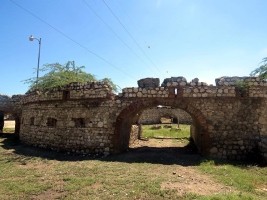|
||||||||||||||||||
|
|
Haiti - Slavery : Did You Know ? 25/03/2017 13:14:08
Did you know that "Habitation Santo-Domingo" was one of the largest habitation of the Plain of Cul-de-Sac and the colonized land of Santo Domingo and one of the largest African slave operating sites which had been founded by the settler Vernon around 1700. The Habitation Santo Domingo takes its family name from settlers from Nantes (France), who had acquired it by the marriage of Claude de Santo with Marie-Thérèse Vernon in 1709. With a surface area of 1,600 carreaux, in 1779 there were 535 slaves in the habitation, which were to produce between 12,000 and 14,000 tons of raw sugar. On the eve of the French Revolution, the owners of Santo went to France and entrusted the Habitation to a manager, who rebuilt part of the buildings of the factory. After the Independence of Haiti, Habitation Santo was ceded to General Germain Frère and then became the property of Félix Carrié before being acquired by Tancrède Auguste in the early twentieth century. The Habitation of Santo Domingo still has many vestiges, including a double stove in very good condition and one of the best preserved wells of the colonial era. It also has a double mill with animal traction. IH/ iciHaiti
|
|
Why IciHaiti ? |
Contact us |
Français
Copyright © 2010 - 2026 IciHaiti.com |


